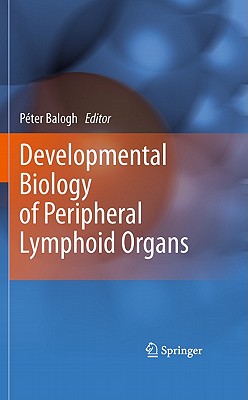The human immune system is a complex network of tissues and organs dispersed throughout the body. Immunology, as one of the most rapidly evolving fields in bio¬medical research, has to date covered the essential cellular and molecular events neces¬sary for immune responses to occur. However, it has paid relatively little attention to important developmental processes underlying the formation of the tissues themselves that carry out immune responses in humans and other mammalians. In contrast to the thymus and bone marrow that are the sole tissues for generating mature leukocytes for antigen recognition and han¬dling in humans and most mammalian species, the peripheral lymphoid tissues where adaptive immune responses are focused display broad tissue distribution and possess diverse archi¬tectural characteristics. These organs develop prior to the individual's exposure to external antigens, and despite their similar functions, their varied appearances indicate a substantial complexity of tissue ontogeny. This volume presents a comprehensive overview of the developmental features of the major peripheral lymphoid organs, thus examining the connection between immunological functionality and structural characteristics utilizing a developmental approach, for an audience ranging from undergraduate students to senior researchers in immunology, histology and clinical medicine.
| FindBook |
有 1 項符合
Developmental Biology of Peripheral Lymphoid Organs的圖書 |
 |
Developmental Biology of Peripheral Lymphoid Organs 作者:Balogh 出版社:Springer 出版日期:2010-11-05 語言:英文 規格:精裝 / 177頁 / 23.1 x 15.5 x 1.5 cm / 普通級 |
| 圖書館借閱 |
| 國家圖書館 | 全國圖書書目資訊網 | 國立公共資訊圖書館 | 電子書服務平台 | MetaCat 跨館整合查詢 |
| 臺北市立圖書館 | 新北市立圖書館 | 基隆市公共圖書館 | 桃園市立圖書館 | 新竹縣公共圖書館 |
| 苗栗縣立圖書館 | 臺中市立圖書館 | 彰化縣公共圖書館 | 南投縣文化局 | 雲林縣公共圖書館 |
| 嘉義縣圖書館 | 臺南市立圖書館 | 高雄市立圖書館 | 屏東縣公共圖書館 | 宜蘭縣公共圖書館 |
| 花蓮縣文化局 | 臺東縣文化處 |
|
|
圖書介紹 - 資料來源:博客來 評分:
圖書名稱:Developmental Biology of Peripheral Lymphoid Organs
|











